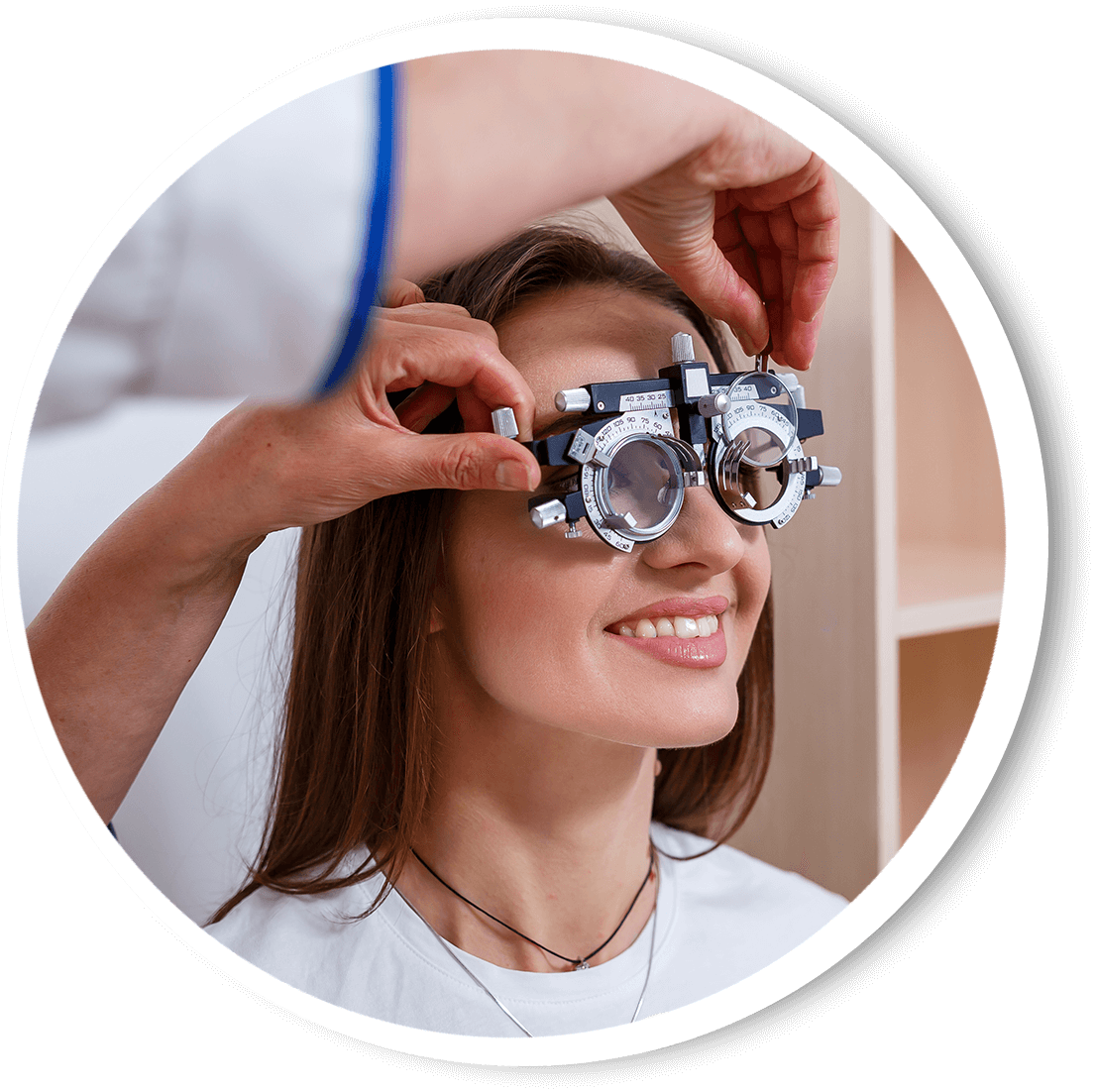Low Vision Examinations
Low Vision Eye Exam Services
Do you suffer from low vision? Does it impair your daily life? If so, now is the time to explore treatment options or devices for correcting your vision. Gulf Coast Vision Center offers comprehensive low vision eye exam services on the Gulf Coast. Our eye doctors can assess your condition, identify the causes of low vision and prescribe the right eye treatment to restore your site.
We use advanced technology and proven methods to measure your vision in various situations. We also conduct a question-and-answer session to learn how low vision affects everyday tasks such as dressing, cooking, driving or reading. Call Gulf Coast Vision Center at one of our convenient locations to schedule a low vision eye exam.

How is a Low Vision Eye Exam Different Than a Standard Eye Exam?
A low vision eye exam is different from a standard eye test. The goal of a low vision exam is to assess the visual system, screen for ocular and systemic diseases and prescribe low vision systems and therapies. This will help to provide an understanding of your state of vision and offer directions for further evaluations and treatments.
Determining how the low vision is affecting your day-to-day life is part of a low-vision exam. Education and counseling for the patient, family and other care providers may be part of the care received.
Early Detection is Key to Preventing Serious Eye Problems
Eye problems occur as we age. Many people start to experience eye problems as early as in their 40s. Symptoms related to low vision include:
- Blind spots in your field of view
- Distortion in images
- Sudden deterioration or loss of vision
The good news is that we offer assessments and proper diagnoses for these conditions. Early detection is the best way to make sure you enjoy clear vision for years to come. To catch eye conditions early and help prevent vision loss, you should schedule an eye exam when you turn 40 or when you start to experience vision problems. If you are at high risk for an eye problem, yearly visits are recommended. If there are no issues, you should then see your doctor every two to four years until you are 54. Afterward, visits should be more frequent - every one to three years. By the time you turn 65, consider visits every one to two years.
What Can You Expect During a Low Vision Eye Exam?
Our low vision eye exams are comprehensive, covering all possible causes and conditions that have led to reduced sight. Assessments may include:
One-on-One
Q & A Session
During your initial session, your doctor will meet with you to discuss your symptoms and your current visual ability. We gather your complete medical history to better understand your vision and identify any possible existing problems or project any potential issues in the future. We conduct a thorough question and answer session and look at any current prescriptions you are taking, family history and overall health.
Visual Acuity
Exam
The visual acuity test assesses the smallest letters you can read on a standardized chart or a card held 20 feet away. Special charts are used when testing at distances shorter than 20 feet. Some Snellen charts are video monitors that display letters or images. During the test, you will remove your glasses or contact lenses and stand or sit 20 feet (6 meters) from the eye chart and read the letters according to the doctor's instructions.
Ocular Response
Analyzer
An ocular response analyzer (ORA) is a new, non-invasive device that analyzes your cornea. The main purpose of the device is to assess the corneal pressure and whether you are at risk of glaucoma. The ORA is impressively accurate at predicting glaucoma progression. Using this device, we may identify glaucoma before it becomes a severe problem that hinders your vision.
Pupil Dilation
Test
We perform a pupil dilation test to increase the size of your pupils during an eye exam. Your eye doctor examines the optic nerve and retina. The exam prevents and treats eye conditions that could lead to vision loss. The dilated eye exams provide important information to an eye doctor, as the observation of that nerve is a crucial part of a comprehensive eye examination.
Glaucoma
Evaluation
During your glaucoma evaluation, your doctor will measure your intraocular pressure (IOP) using a procedure called tonometry. After administering eye drops to numb your eyes, your doctor will use a device that applies a small amount of pressure to your eye to measure its internal pressure. A standard glaucoma evaluation can help us determine if you have glaucoma and how far along the condition is.
Standard Low Vision Exam
A low vision exam assesses how visual impairment affects your daily life. The exam helps us determine what eyewear or other tools you may need to maintain proper vision. Instead of using a standard eye chart, our doctors use portable charts and a device called a trial frame that is worn like a pair of glasses to measure visual ability. A trial frame is accurate and can help you determine what path you need to take for treatment.
Schedule a Low Vision Eye Exam Today
Contact Gulf Coast Vision Center today at one of our convenient locations in Pace, Crestview or Pensacola to schedule a comprehensive low vision eye exam.
